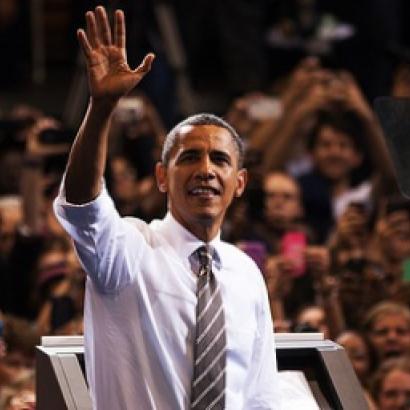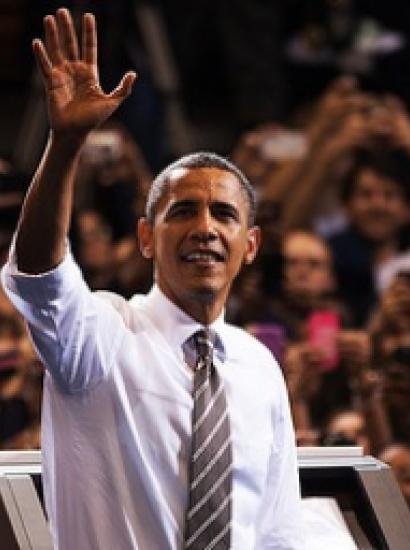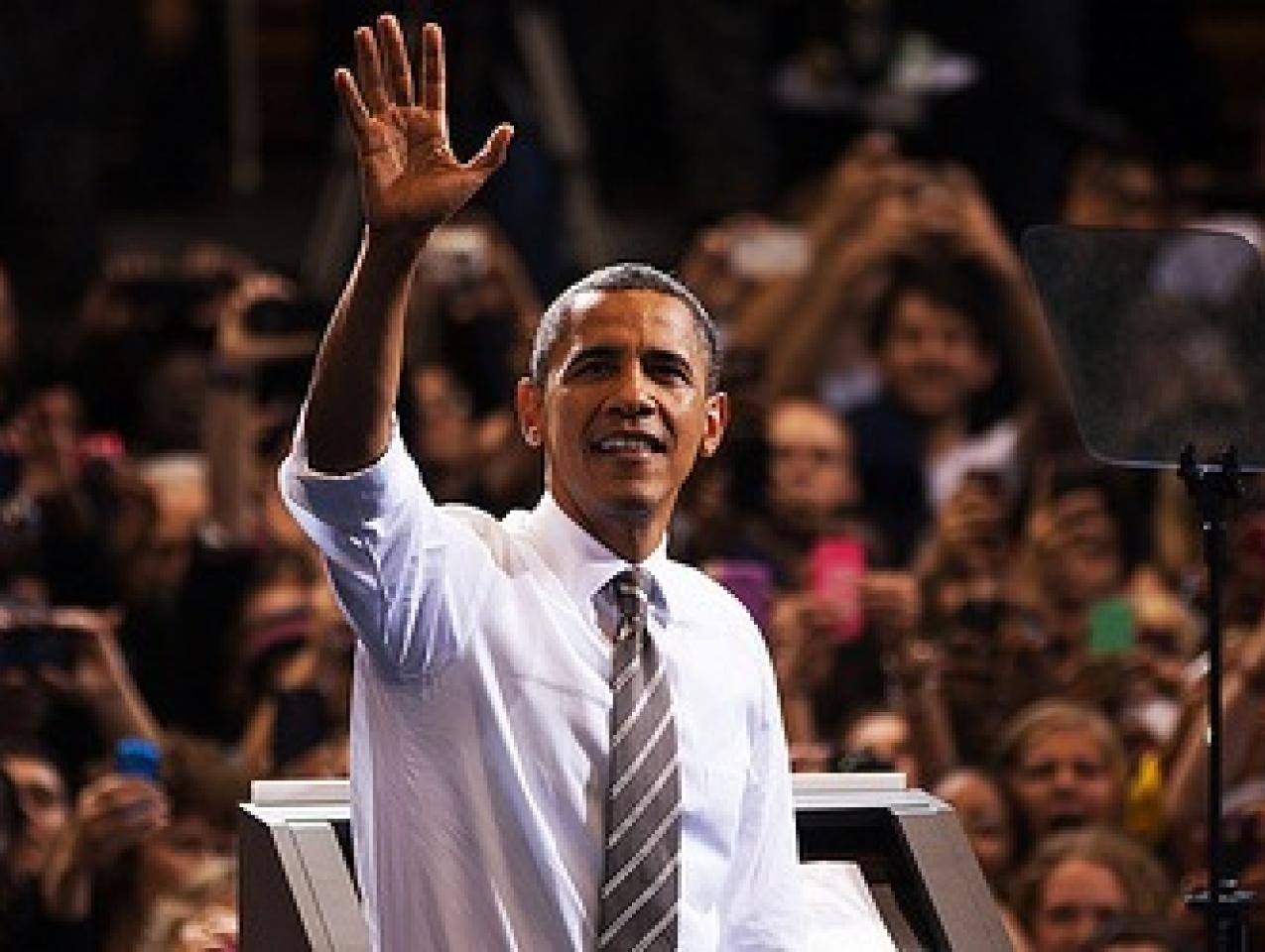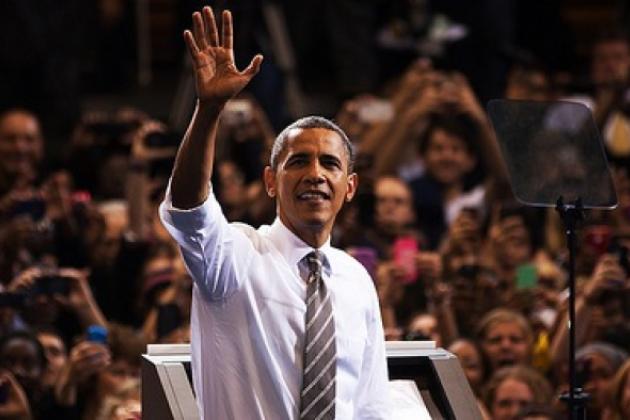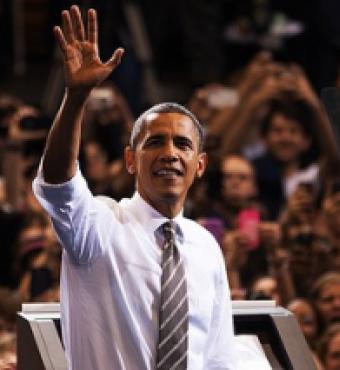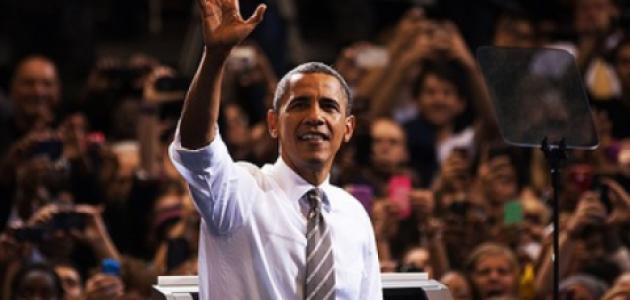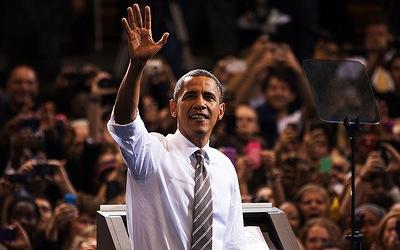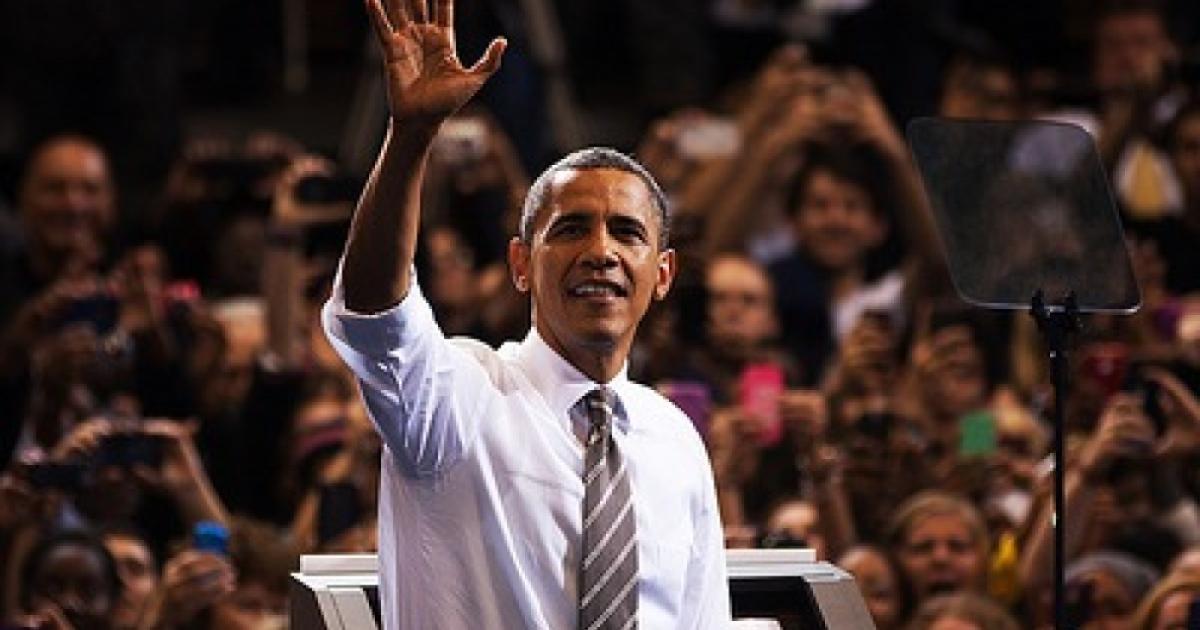- Politics, Institutions, and Public Opinion
Regardless of Tuesday’s outcome, the 2012 presidential election shapes up as a contest of firsts.
Should Barack Obama be re-elected, it would be the first time in 192 years that America had three consecutive two-term presidencies. Obama likely will be the first incumbent since Franklin D. Roosevelt in 1944 to see a decline in electoral votes (Obama received 365 of them in 2008; he’ll be fortunate to approach 300 this time around). Obama also would be the first president in modern times to secure a second term with fewer popular votes (the same happened to FDR in 1944, but he was seeking a fourth term).
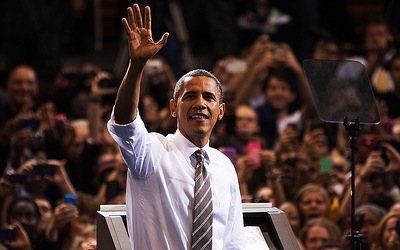
Photo credit: Brandon Baker photography
And try this for irony: Thanks to a diminished turnout into mega-states like California and New York, Obama could lose the popular vote but still win the election by prevailing in the Electoral College—not that the left would complain, as it has ever since George W. Bush took the same avenue to Washington a dozen years ago.
As for Mitt Romney, his “firsts” begin with religion—his Mormon faith. Romney-Ryan would be America’s first non-Protestant ticket. Romney would be the first Republican in recent times elected out of a Democratic state (he votes in Massachusetts), as well as America’s first Michigan-born president. Not since 1844 (James K. Polk) has a presidential winner lost his birth and residential states. Romney likely will one up Polk, losing Massachusetts and Michigan, and also two other states where he vacations (California and New Hampshire).
Unfortunately, that’s pretty much where the novelty of this election ends. When you wake up Wednesday morning, take a look at the nation’s map of Republican “red” and Democratic “blue” states. If things break Romney’s way on Tuesday night, chances are that map will look a lot like it did . . . eight years ago, when Romney was still a governor and Obama but a senator-elect.
Retaking Republican Ground
For Romney, the most conventional route to 270 electoral votes is winning at least six of the nine states that Obama turned from red to blue in 2008. Two of those seem certain: Indiana and North Carolina. Two others, Florida and Virginia, seem within reach. That leaves just two other states—Ohio and one other “battleground” locale like New Hampshire—to put Romney over the top.
But consider this scenario: a last-minute Romney surge, along the lines of the late shift to Ronald Reagan in 1980 that turned a neck-and-neck race into a decisive verdict for the Republican challenger. Reagan won 50.7 percent of the vote, 44 of 50 states, and 90 percent of the Electoral College in that election.
No one expects the same electoral rout. But if history repeats itself, Romney would be looking at taking back nearly all of the red states that turned blue in 2008, plus maybe adding a few states presumed to be out of his reach: Michigan, Minnesota, Pennsylvania and Paul Ryan’s Wisconsin.
My sense is that the only states that will vote differently from 2004 will be Nevada, New Hampshire, and New Mexico. The other 47 states will not change in color. This scenario would give Romney a 281-157 electoral win, similar to George W. Bush’s 286-252 win over John Kerry eight years ago—which raises a question: after two presidential elections featuring a presumed transformative figure in the form of Barack Obama, how did America’s political landscape end up back where it was eight years ago, before America’s first black president shook things up with his blue paintbrush?
The Blue Ink Fades
Following Obama’s victory in 2008, the Democratic consultant James Carville wrote a book: 40 More Years: How the Democrats Will Rule the Next Generation. That prophecy lasted all of two years, until the biggest Republican congressional landslide since 1938. The 2010 off-year election was unique in that it was both “nationalized” as a referendum on Obamacare and “personalized” as Republicans mocked the President’s strutting style.
The fact is, Obama’s landslide was misleading. The GOP landslide of 2010 was a natural course correction. Nationally, Obama did defeat John McCain by a healthy 7.2 percent percent in 2008. But if you take California, Illinois, and New York out of the equation—Obama carried each by over 24 percent—then Obama’s margin of victory becomes a more modest 2.76 percent. By comparison, Bush’s margin of victory over Kerry in 2004 was 2.4 percent. The 2008 swing states reflect this narrowness: Obama took Florida, Indiana, and North Carolina all by less than 5 percent.
Though the swing states changed color in 2008, they didn’t lose their conservative stripes. Virginia elected a Republican governor in 2009; Florida, Iowa, Nevada, New Hampshire, New Mexico, Pennsylvania, Ohio, and Wisconsin followed suit a year later.
In the 2010 midterm election, the GOP took control of the state senate in Nevada and the state legislative houses in Colorado, Indiana, Iowa, and Ohio. Both of North Carolina’s legislative chambers went Republican in 2010—the first time the GOP held the Tarheel State’s upper chamber since 1870.
Those swing states were not alone in their anti-Obama sentiment. Before the midterm election, Democrats controlled 27 state legislatures while Republicans had 14. Another 8 were divided (Nebraska considers its unicameral legislature non-partisan). After the election, the GOP controlled 26 legislatures to just 17 for the Democrats—the Republicans’ best showing since 1952.
A Different Election, a Different Obama
In 2008, with his first national campaign underway, then-Sen. Obama had the luxury of running twice as the “change” candidate: in the Democratic primary, turning the page on the Clinton years, and in the general election, turning the page on the Bush years. As a candidate with precious little in the way of accomplishment other than writing memoirs, Obama was the ideal blank slate for voters: Want to close Guantanamo, fix Washington, and heal the planet? Vote for hope.
In the 2012 election, Obama couldn’t change the fact that he had, after four years on the job, become a reality instead of an ideal—he is an incumbent and an embattled politician with a complicated record on economics, foreign policy, and various unmet expectations. He has chosen a campaign tailored to a narrower segment of left-leaning voters as his emphasis on the class warfare of higher taxes and the “war and women” demonstrates.
Obama’s calculation, and it might prove yet to be fatal, is that he can bank on a cult of personality that triumphed in 2008 to work the same magic a second time around. The president trotted out celebrity endorsers at his national convention and worked the fawning media circuit—David Letterman, Charlie Rose, the ladies of The View—in hopes of recreating those 2008 optics. But in a slow economy, grim electorates tend not to care for mirth, shallowness, and egoism.
Add to this a sourpuss personality on display in the first presidential debate and a condescending attitude in the third, coupled with a tendency to emphasize his opponent’s negatives rather than his own positives, and the result is the anti-thesis of 2008. An analysis of 2012 ads by the Wesleyan Media Project shows that nearly 60 percent of Obama 2012 spots have been negative, compared to 43 percent in 2008; Romney’ ads are 49 percent negative, which is the same rate as McCain’s.
The bottom line: Barack Obama, Version 2.0, has proved to be a downer of a candidate who is unable to generate the same buzz as he did four years ago. A Boston Globe analysis of new-voter registration since the end of the primary season in six swing states—Colorado, Florida, Iowa, Nevada, New Hampshire, and North Carolina—shows Democrats signing up 422,000 voters to 287,000 for Republicans. If that sounds impressive, it’s not: In 2008, Democrats registered one million new voters in those same states, compared to just 300,000 for the GOP.
Playing—And Spending—To Win
There are numerous ways to explain John McCain’s loss in 2008: the financial crisis, war fatigue, resentment toward George W. Bush and congressional Republicans, plus the fact that McCain wasn’t a movement candidate. Like Bob Dole in 1996, McCain came across as a septuagenarian senator running out the political string against a more youthful challenger.
But McCain was also his own worst enemy—financially at least. He accepted $84.1 million in public financing for the fall election, while Obama opted out of the system and its limited spending (McCain also eschewed public financing in the GOP primary season). That opened the door to Obama outspending McCain by a 4-1 margin from September 1 to November 24 of that election year.
The impact of this decision was especially devastating to McCain in the swing states, as the Arizona senator found himself buried in an avalanche of Democratic television advertising. Obama bought twice as much TV-time in Ohio as did McCain, triple the time in Florida and Virginia, quadruple the time in North Carolina, and thirty-four times more in Indiana ($17 million vs. $500,000).
In 2012, Romney’s campaign took the opposite approach, ironically taking advantage of the Supreme Court’s Citizens United verdict that overturned the McCain-Feingold campaign-finance law and opened the door to mega-bucks “super PACs.”
Romney likely won’t catch Obama in overall fundraising—at last count, the President had collected $1.06 billion, with Romney close behind. But thanks to the emergence of super PACs, we have a more level playing field in 2012 than in 2008.
Take a look at all-critical Ohio, for example. Per a National Journal analysis, the Obama campaign had spent $63.2 million on Ohio TV ads to only $37.6 million for Romney. But add in super-PAC spending and the revised totals are $78.3 million by Obama and Democratic supporters, versus $85.64 million for Romney and GOP groups.
The same is true in Florida. Obama and (non-affiliated) friends have spent $70.5 million on ads, compared to $93.5 million for Romney and friends. The story is similar in Virginia (Republicans spending $71.5 million; Democrats $60.1 million) and Colorado (Republicans $36.7 million; Democrats $34.3 million).
Don’t Get Cocky
President Obama still has an ace up his sleeve: as candidates’ campaigns can purchase airtime at a discount and super PACs can’t, the deeper-pocketed Obama campaign has been able to run more spots. According to the Wesleyan Media Project, Romney and his supporters spent $87 million running nearly 100,000 ads in swing states during the first three weeks of October. Obama and his supporters spent $10 million less but ran nearly 15,000 more spots because of the campaign discount.
Will that prove to be the difference? Perhaps. But we won’t know until the voters are counted and the analyzed. It may turn out that Romney succeeded in re-coloring the political map and resetting the dial to 2004. Or, he may he fail because President Obama’s “firewall” holds in Ohio, Iowa, Colorado, and Nevada.
If so, Obama would avoid the stigma of becoming the fifth incumbent in the last century to fail in his re-election bid. It will be a diminished victory. Though we are only four years away from 2008, we are light years away from the Obama of 2008.








